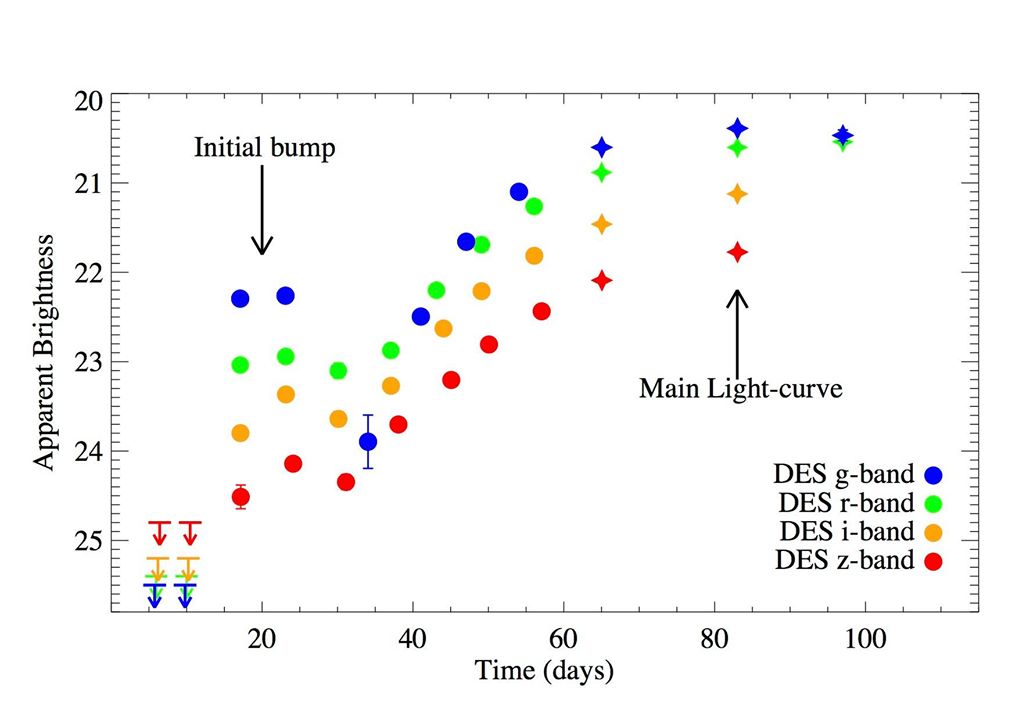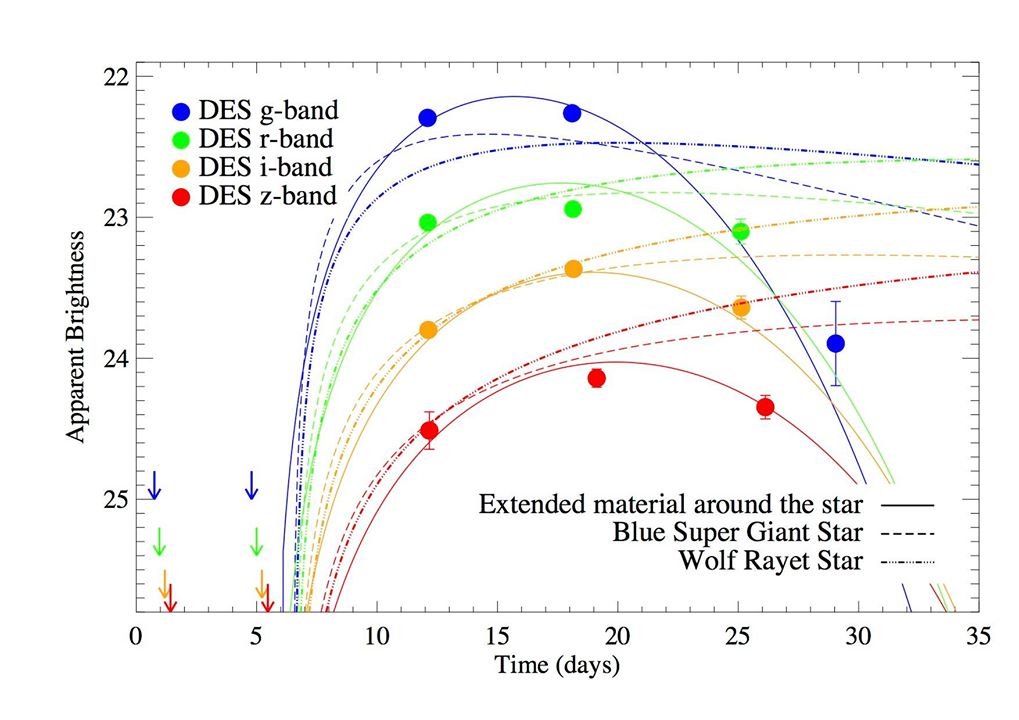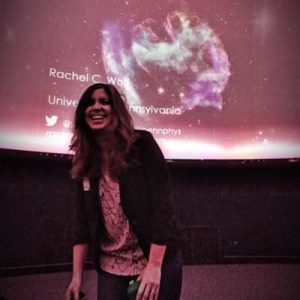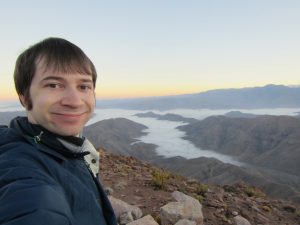 What really distinguishes DES14X3taz from previously discovered SLSNe is the presence of an early “bump” in the light curve prior to the main light-curve. The figure below shows these features for DES14X3taz.
What really distinguishes DES14X3taz from previously discovered SLSNe is the presence of an early “bump” in the light curve prior to the main light-curve. The figure below shows these features for DES14X3taz.
 Fitting models to the main curve show that the physical mechanism driving the explosion is consistent with a magnetar, a rapidly rotating neutron star (as seen in the match to the Extended Material Around the Star). In the figure, this is consistent with the solid lines. Fitting black-body curves to the DES data of DES14X3taz, we show that the initial peak cools rapidly, before a period of reheating, which drives the main part of the light-curve. Using chi-squared statistics, we compare photometric data of the initial peak with various models of shock-cooling and find that shock from material at an extended radius is consistent with observations. We also find a sample of previously discovered SLSNe that also exhibit this early bump in their light curves; therefore, we believe our findings suggest a unified physical interpretation for all SLSNe.
Fitting models to the main curve show that the physical mechanism driving the explosion is consistent with a magnetar, a rapidly rotating neutron star (as seen in the match to the Extended Material Around the Star). In the figure, this is consistent with the solid lines. Fitting black-body curves to the DES data of DES14X3taz, we show that the initial peak cools rapidly, before a period of reheating, which drives the main part of the light-curve. Using chi-squared statistics, we compare photometric data of the initial peak with various models of shock-cooling and find that shock from material at an extended radius is consistent with observations. We also find a sample of previously discovered SLSNe that also exhibit this early bump in their light curves; therefore, we believe our findings suggest a unified physical interpretation for all SLSNe.
SLSNe are a new class of transient event, with potentially exciting consequences for cosmology. Recent work (Inserra & Smartt 2014) has suggested that these events may even be “standardisable candles”, and thus useful to measure distances to the high redshift Universe. As these events are more luminous than traditional Type Ia supernovae they have the potential to extend SN cosmology to larger distances than currently possible. However, little is well-understood about the explosion mechanism driving these events and we will need to understand more about the origin of SLSNe as we explore utilizing them as cosmological probes.
About the Paper Author
Mathew Smith is a post-doc working at the University of Southampton. He’s been involved in DES for the past ~5 years; first in Cape Town as a post-doc focussing on spectroscopic followup!
About The DArchive Authors & Editors

Rachel C. Wolf is an astrophysics PhD candidate at the University of Pennsylvania. She is primarily interested in how to best use Type Ia supernovae to understand more about the evolution of our universe. Most of her work has focused on studying correlations between supernova brightness and host-galaxy properties and on creating new statistical techniques to compare observational data to cosmology theory. Rachel is also very passionate about science education and public outreach. She is involved in many projects in the Philadelphia community and serves as one of the co-coordinators of Education & Public Outreach for DES.

Chicago. He works on various projects studying the large scale structure
of the Universe using the millions of galaxies DES observes. These
projects include galaxy clustering, correlations of structure with the
cosmic microwave background, and using the structure of the Universe to infer redshifts of galaxies. Ross is also an active science communicator, volunteering at Chicago’s Adler Planetarium as well as writing and editing for The Darchives. He also loves observing for DES in Chile, where he has observed more than 30 nights.